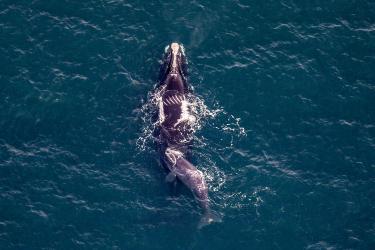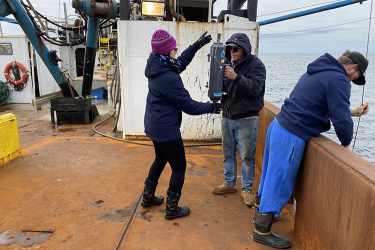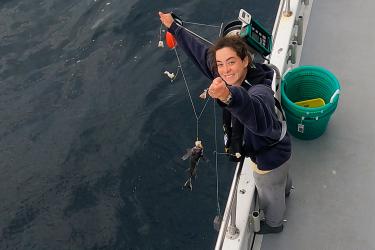Chief Scientist’s Weather Report: Mostly muddy, with a chance of increasing mud, followed by scattered mud. Possibility of severe mud in the afternoon. All mud in the evening.
My name is Katie Frame and I’m a first year master’s degree candidate in oceanography at Dalhousie University, supervised by Carolyn Buchwald and Chris Algar. One of the great things about the oceanography program at Dalhousie is that they require all graduate students to go out to sea for an extended period of time, giving them the opportunity to gain at-sea experience firsthand. It’s a great way to help students decide where their interests lie and help them become more well-rounded scientists and individuals. A few months ago, one of my mentors asked if I was interested in going on a research cruise in his place. I have wanted to go on a research cruise since first starting on my path to becoming an oceanographer, and was excited for the chance to experience life on a ship.


On board I’m working with Dr. Paul Snelgrove from Memorial University of Newfoundland to collect push cores of mud sediments via the ROV ROPOS in order to compare environments inside and outside of submarine canyons. Specifically, we are interested in the effect that microbes and larger fauna have on nutrient cycles in the sediments. Once the cores are onboard the ship, I collect a small sediment sample at three different depths from each core. Back at Dalhousie we will assess the diversity of microbes at each location, and also determine the background sediment conditions such as sediment grain size. I also profile one of the cores to analyze the oxygen penetration/respiration depth and then collect porewater samples.

The porewater samples will be analyzed for nitrogen, phosphorus, and sulfide, allowing us to see how nutrients are transported through the sediments. The remaining cores are also used to measure the changes in nutrient and oxygen concentrations over time. They are incubated for 48 hours, and then the core is split. Back at Dalhousie the sediment will be examined for microbes and larger fauna in order to evaluate

abundances of organisms in each layer. Working with Dr. Snelgrove, we hope to evaluate the contribution these tiny organisms make to these ecosystems as well as characterize the type of sediments found inside and outside of the canyons.
The cruise has been an amazing learning experience and a lot of fun. It took a few days for me to get my "sea legs" but now I’m able to walk around the ship without constantly running into walls. I think one of nicest things that happened to me on the ship was celebrating my 23rd birthday. The crew made birthday cards, sang, and even made a cake for everyone on board that had a birthday this month. I am very thankful to have been given the opportunity to explore the deep-sea and to spend two weeks with everyone on board the NOAA Ship Henry B. Bigelow as they teach me the ins and outs of being an oceanographer.
Kate Frame, Dalhousie University, Nova Scotia



